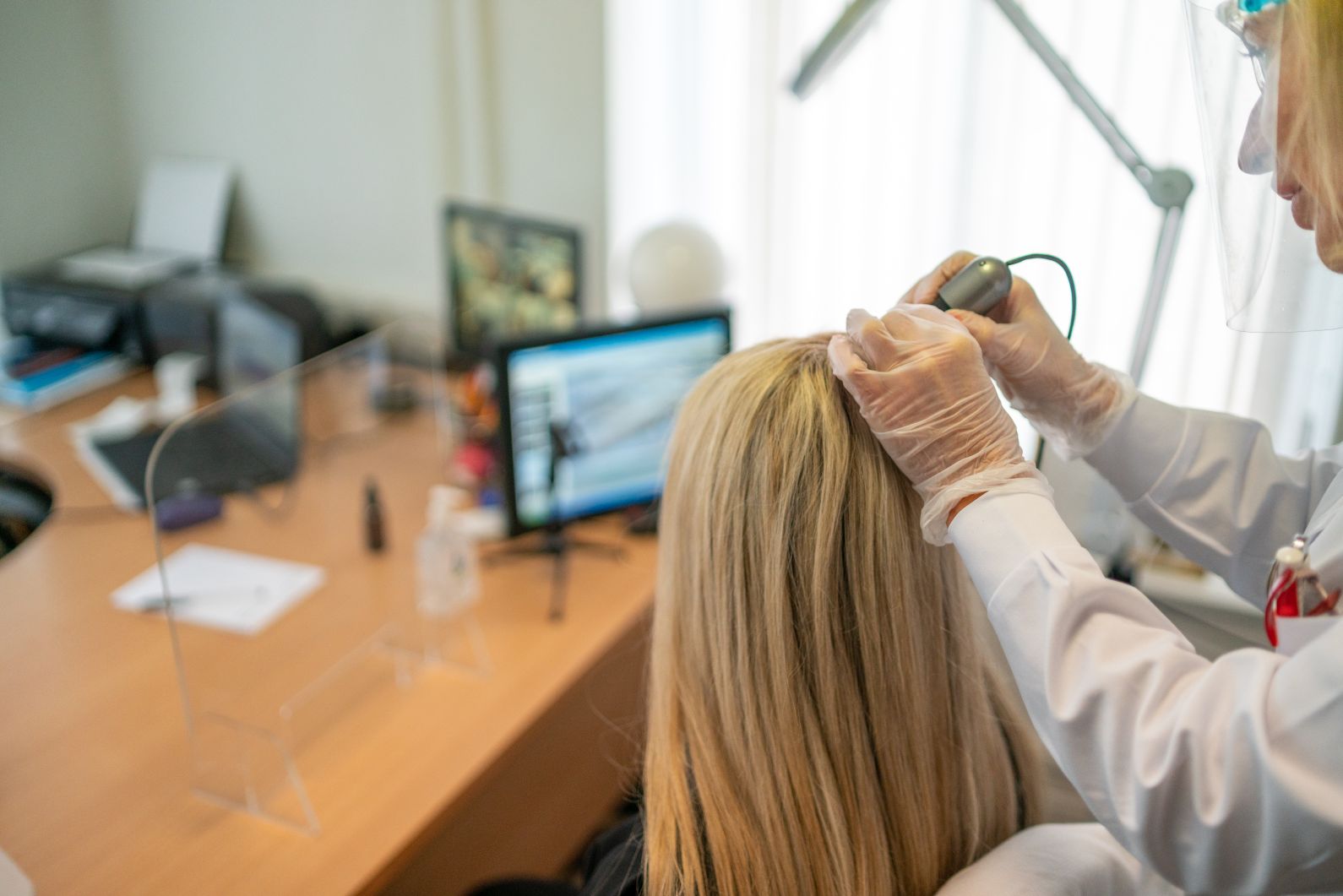Your temples are the areas found at the sides of your forehead and behind your eyes. The bone situated on this region is called the temporal bone, thus the term temple. Strands of hair cover most of this area. Over time though, the strands dwindle in number and in some cases, new hair stops growing.
Two Common Causes of Hair Loss on Temples
Androgenetic Alopecia
One of the leading causes of hair loss on temples is androgenetic alopecia. A hereditary condition, androgenetic alopecia affects both men and women. It is popularly called male pattern baldness (MPB) in men and female pattern hair loss (FPHL) in women. Androgenetic alopecia is the most prevalent type of hair loss in both sexes.
In MPB and FPHL, the alopecia has a distinct, predictable pattern. In men, it usually starts at the temple, followed by a receding hairline which eventually leaves an M-shaped hair pattern. It is also common for MPB to begin on the crown area. Meanwhile, in women, the first signs of hair loss are the widening of the part and reduced hair volume around the temple area. So, basically, if you notice that hair is thinning on your temples, you may be exhibiting early signs of androgenetic alopecia.
This type of alopecia is progressive. This means that, over time, you are going to lose more hair, eventually resulting in balding (if you are a male) and hair thinning (if you are a female). It is also not reversible or curable. Fortunately though, with the help of specialists like dermatologists, male pattern baldness and female pattern hair loss can be prevented from progressing quickly.
So, please do not think twice about seeing a dermatologist when you notice hair loss on your temples. Just like in other hair loss conditions, time is of the essence in androgenetic alopecia. The earlier it is treated, the better the chances are of achieving a favourable outcome.
Traction Alopecia
Another common cause of hair loss on the temples is traction alopecia. This type of condition is mainly due to hairstyles, particularly the uber tight ones. The pulling force that hairstyles like tight ponytails, buns and braids put on hair strands loosens the shafts from the follicles. Over time, as the hair is repeatedly styled in a tight manner, the strands get broken or eventually fall off.
Often, the hair loss happens on the sides of the scalp and temples as well as along the hairline. Other regions of the scalp may also be affected depending on the hairstyle. Just like pattern baldness, traction alopecia happens gradually. In most cases, sufferers only notice the problem when it’s already severe.
The most common signs of traction alopecia include broken hairs or pimple-like bumps on the affected area. There may also be pain on and reddening of the scalp. In rare cases, itching is experienced.
Unlike androgenetic alopecia, traction alopecia is reversible for as long as it is addressed immediately. In fact, in mild cases, treatment may not be necessary. All that’s needed is to wear the hair down and stop tying it tightly. Once the cause – the tight hairstyle – is eliminated, hair growth in the affected area may happen in six months.
However, if the traction alopecia is severe, dermatologists or other hair and scalp specialists need to be consulted. In these cases, medications may be prescribed to stop the swelling or address any open sores. Hair growth creams or medicines may also be required.
Hair loss on the temples is fairly common, especially in people with androgenetic alopecia and those who sport tight hairstyles. So, do not panic if you notice that you are losing hair on these areas. What you should do instead is see your dermatologist ASAP so she can properly diagnose your condition and create a treatment plan.
Noticing hair loss on your temples? Our hair and scalp specialists can help you determine the cause and prevent your problem from worsening. Call us today at +353 (0)1 6793618!
—
Image from Pixabay



